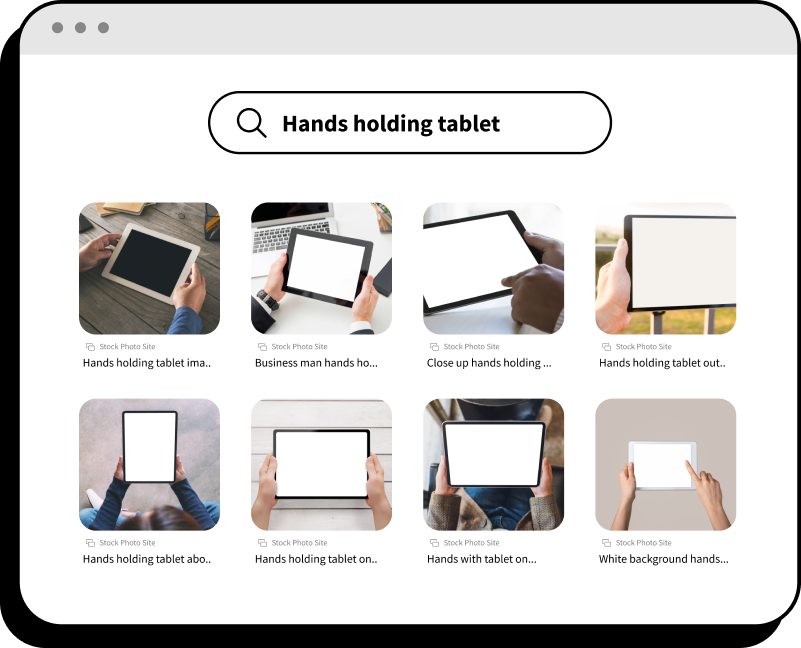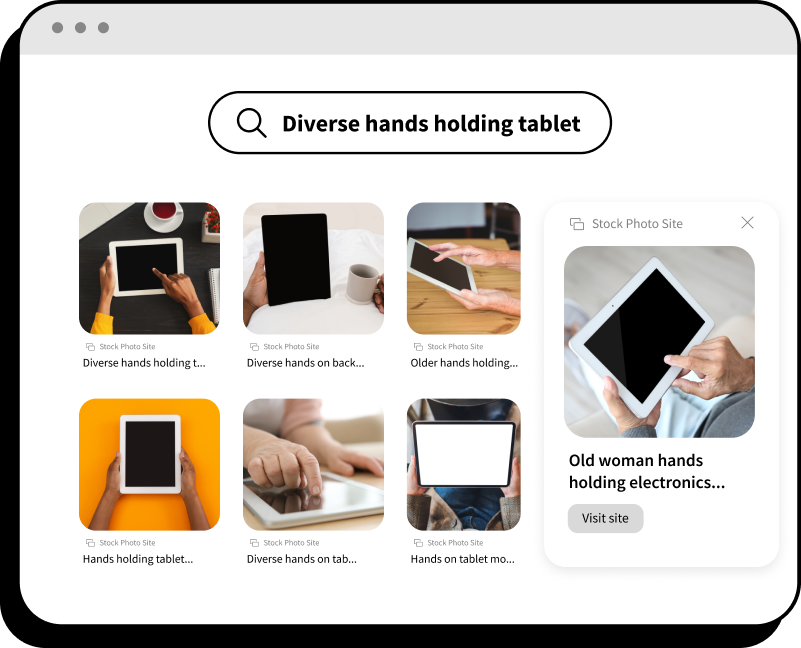Ageism - The Work
How to ensure age representation and inclusion in the work we create and the way we create it.
Working age-inclusion into
every part of the work


Keep going! You’re upping your chances of producing work that is representative of all ages. But inclusive work…takes work. Why? We’re human. We’re biased.
And, when we’re crunched for time (like…all the time), we can unwittingly succumb to stereotypes and tropes, working with the same people, and falling back on the familiar.
More than half of respondents (56%) are concerned that ageism impacts the work they produce.
Source: New & Improved Age Inclusion in Adland Survey 2023 Learn More in The New & Improved Surveys
People over 50 make up more than 1/3 of the US population and labor force, but…

Include inclusion in all the things
Read through this cheat sheet.
Consider what you’re already doing well in each category. How can you expand your impact? What are you not yet doing that you can implement?
List at least one action in each category that you will take and share with your team.
- The brief
Use thoughtful and inclusive language.
- Incorporate a commitment to creating work that is respectful of all and avoids exploitation of any and all stereotypes, tropes, or dated jokes – including age. (This should be across all intersections of DEI, yet many forget to include age in their efforts!)
- Avoid euphemisms. Ensure your language is current, kind, and inclusive.
- The team
Mix it up on teams and assignments.
- Intentionally pair younger and older workers together. Yes, even creative partners.
- Don’t assign projects based solely on age. Think about what each person uniquely brings.
- Consider your internal teams across all disciplines as a whole.
Mixed-age teams come up with more creative and inclusive solutions.
Source: Human Resource Management Journal, vol. 23, Issue 3, (2013) - The story
What story are you telling and how are you telling it?
- Ensure your narrative isn’t harmful and doesn’t play into stereotypes or cliches.
- Include age representation, regardless of the target market.
- Remember, the societal default is young, but we don’t have to default.
- Pro Tip: You can still include older folks in a campaign targeted to a younger demographic, and vice versa, to accurately reflect society.
- What you say, show, and see all matter.
- Consider the images. (How long has that stock image of a silver-haired person riding a bike with their legs straight out been around, anyway?)
- Download Take Stock, a curated list of diverse and inclusive image sites, including Getty + AARP.
- The POV
Don’t stick with the same familiar folks with the same familiar perspectives.
- Intentionally hire age-diverse talent for staff, freelance, contract, and projects.
- Consider the internal and external team: strategists, designers, writers, art directors, directors, casting directors, etc.
- Check out Free The Work, a global community of underrepresented creators on a mission to change the lens through which we view DEI and production.
- Casting
Cast authentically and across the age spectrum.
- Avoid ageist language in write-ups.
- Consider age representation for all talent, including the VO.
- Pro Tip: Describing a familiar character or celebrity who is similar to what you’re looking for is an easy way to convey attributes with less potential to be unintentionally offensive.
- Production
Choose production companies with diverse, age-inclusive crews.
- Work with wardrobe and makeup to ensure an authentic aesthetic with sensitivity to talent of all ages – and without playing into stereotypes.
- Take time to be intentional about lighting all ages and skin tones well.
- Post
Retouch with care.
- If it’s not absolutely central to the concept, is there a need to hide the natural signs of aging like wrinkles, laugh lines, and gray hair? If not, don’t.

But…what if the account is an anti-aging product?
The ad industry certainly has a role in perpetuating ageism, whether we like it or not. We reflect culture, and also affect it. And youth worship is a part of our current culture.
Anti-aging products are historically and currently typically targeted to women, as there’s a particular stigma about women getting older.
The intersection of age and gender is a double bind. Add race on top of that, and it’s a triple. Add to that the fact that women are paid less yet spend more over their lifetimes (beauty standards, the pink tax, healthcare, dry cleaning, and more), and…that’s another topic for another time.
Something to consider, particularly in the fashion and beauty categories.
Begin to think about:
How do you handle conflicting interests?
What might our industry do to avoid perpetuating these beauty standards while keeping clients happy?
How do you move from ideas like anti-aging to concepts like healthy aging, positive aging, or aging well?
Remember:
People of all ages want to look good at the age they are, not the age they are not

Partnering for progress
Surprise: clients are just like the rest of us. Flawed, biased, human.
23%
Say a client has made a deliberately ageist request
33%
Say they had to manage client expectations related to age
Some agency folks share some of the challenges they face:
How we can team up and improve:
Get client buy-in on your DEI commitment and initiatives – before you start the work. (Bonus points for making this part of your pitch process.)
Agree to openly discuss all aspects of DEI as the work unfolds, and ensure age is an element of those discussions.
Hold each other accountable throughout the process.
Share what the agency is doing to push DEI efforts. (You can even share this link. Blame it on us.)

Check the deck
We do so. Many. Presentations.
But are our images age-inclusive?
Check out these image searches — what do you notice?

The default is usually young (and white and male).

This search for diverse hands provided a little more variety…including one “old woman hands holding electronics…”
Speaking of age-inclusive language (SEO aside), could it have been captioned in a more sensitive way? How would you edit it?
Why does it matter? When ageist (and other -ist) language becomes normalized, it’s detrimental and perpetuates problematic norms.

Across all ages there should be more collaboration. The thing that prevents this is the strict hierarchical structure of agencies — usually younger folks are in lower positions and older folks are in leadership / management, so there is an inherent lack of collaboration and communication between them. We need perspectives and skills from every age, and this happens through an open structure and less old-school hierarchy.
Source: New & Improved Age Inclusion In Adland Survey 2023




